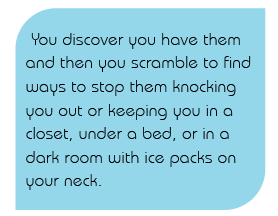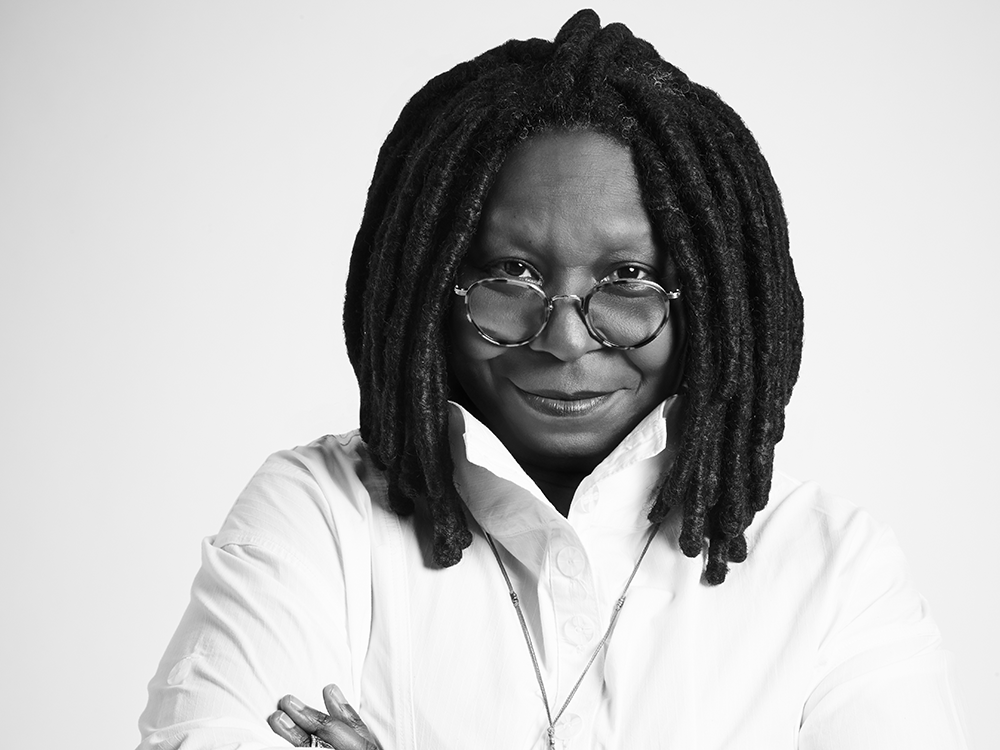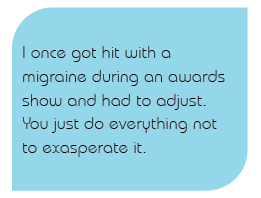
By Jessica L. Dupree
Editor Onaje McDowelle
Whoopi Goldberg opens up about her lifelong journey to finding treatment for migraines and finally seeing light at the end of the tunnel.
Whoopi Goldberg entered our households and hearts nearly three decades ago with her debut film “Citizen,” but it was three years later with the release of Stephen Spielberg’s “The Color Purple” that the world truly came to know one of our time’s greatest entertainers. Goldberg took home The Golden Globe Award for Best Actress, an NAACP Award for Outstanding Actress and was nominated for an Academy Award for her performance and portrayal as Celie Johnson. As her career catapulted with continued success of films “Ghost,” “Sister Act,” and numerous others, she soon found company within an elite group of entertainers including Emmy, Grammy, Oscar, and Tony winners.
Ironically, she was also one of nearly 40 million people in the United States who suffer from migraines. According to the Centers for Disease Control and Prevention, migraines can be severely debilitating and are considered a main cause of disabilities. Having coped with the disease for years, Goldberg likened the pain to kung fu fighters with razor blades in her head. For decades migraines impacted every aspect of her life, from working as a professional actress to motherhood. Standing boldly in the spotlight, few knew the darkness they caused. She always hoped there would be light at the end of the tunnel.
“You discover you have them, then you scramble to find ways to stop them knocking you out, keeping you in a closet, under a bed, in a dark room, or with ice packs on your neck,” said Goldberg. “I didn’t get them every day, but when I got them you just wanted it to stop and you take all kinds of things.”
Goldberg sat down with Heart & Soul to discuss life with migraines and managing the condition.
Tell me about the journey to finding treatment for migraines?
It’s everybody’s story, I think. You discover you have them and then you scramble to find ways to stop them knocking you out or keeping you in a closet, under a bed, or in a dark room with ice packs on your neck. I didn’t get them every day but when I got them, you just wanted it to stop and you take all kinds of things. People say “Oh, this will help,” or “try this!” You try them all and it’s like okay – this is not working and when will somebody put something helpful together? You go on living 40, 50, 60 years until suddenly someone shows up with “something that works,” and you’re kind of like “come on, really?” They say, “tell your doctor you want to try this because it might help.” That’s what I did and I have to say the outcome has been wonderful.
During your journey to finding treatment, what was the lowest point? You’ve always had to film, what is it like being on set with migraines?
Well, it’s not pretty. You don’t want to say, “I have to take off a few hours because I’m in the midst of a migraine.” You take whatever somebody hands you and hope for the best. I once got hit with a migraine during an awards show and had to adjust. You just do everything not to exasperate it. There’s lights in your face, you’re sweating a lot and you just breathe and hope not to throw up or pass out. You let people know what’s happening. You try countless things and hope it won’t appear on a daily basis.
How did migraines impact your life?
Migraines rob you of time. They don’t care about your family or schedule or anything. All it knows is that you’re not going to be doing anything or talking to anybody, you’re not going to be looking cute or going out. You’re not doing anything. You just want to get into the bottom of that closet and pull as many clothes as possible over your head, hoping that you can stop the feeling. All I can say is that people should call their doctors and ask about Nurtec® ODT (rimegepant), because I believe that there is a beautiful light at the end of this tunnel that you can’t even believe. If you have migraines check with your doctor and see if Nurtec ODT can help you as it helped me. The most common side effect is nausea but I didn’t experience any with it.
About Migraines and Acute Treatment
Migraines Are a Very Common Condition and Can Be Severely Debilitating
Migraines are a very common condition, with 15.3% of Americans aged 18 years or older reporting a migraine or severe headache in the previous 3 months, a figure that has remained stable for almost two decades. Migraines can be severely debilitating and are considered one of the main causes of disability worldwide. In one study among patients with migraines in the United States, more than half reported severe impairment in activity, the need for bed rest, and/or reduced work or school productivity due to migraines.
Migraine Attacks are Often Treated in the Emergency Department Setting
In the Emergency Department (ED) setting, headaches overall account for about 3% of all ED visits annually in the United States. Use of opioids in the ED to treat this condition has been associated with increased risk of revisits, hospital admissions, and increased ED length of stay. Despite published guidelines recommending non-opioid treatments for migraine attacks, opioids were administered for adults presenting with migraines in over half of ED visits across age groups. Furthermore, one study found that 23% of adolescents and young adults who presented to the ED with a migraine received an opioid prescription, exposing this younger cohort to opioids with potential long-term effects. Another study examining 2017 medical claims data among privately insured patients noted that opioid prescriptions linked to medical encounters for migraine attacks were written for a median of 7 days (interquartile range 4-20 days) for a median daily dosage of 22.5 MME
Source CDC • www.cdc.gov/acute-pain/migraine/index.html












